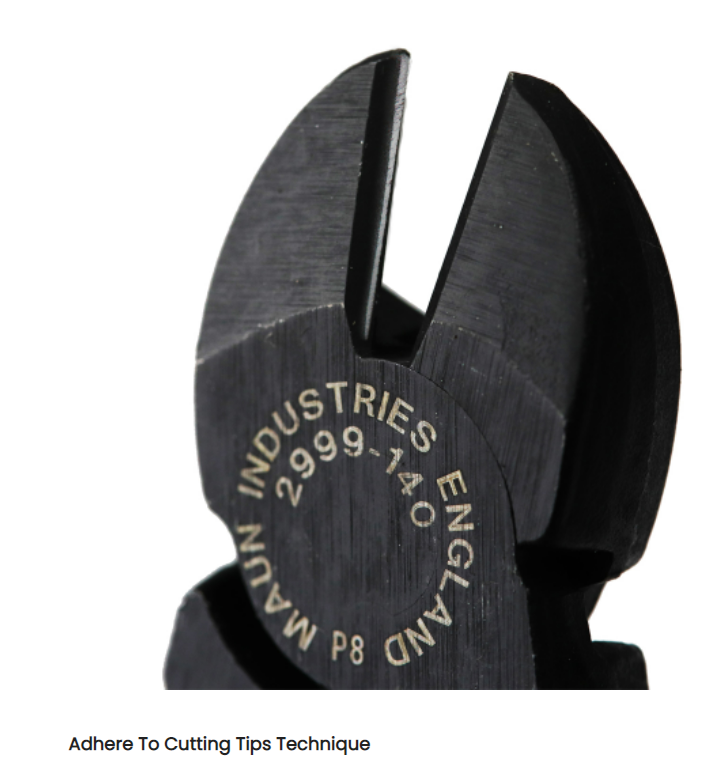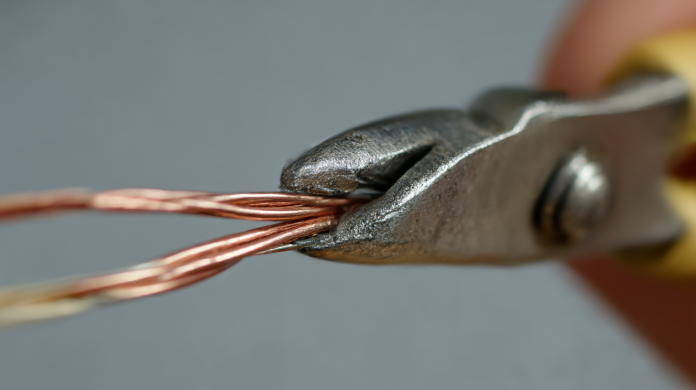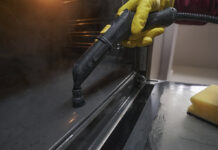Wire cutting is a technical activity that requires skills and basic understanding. But without the right approach, you might damage the wire or hurt yourself. However, you can perform this task efficiently with the correct cutting technique. All you need is the right tools, adhere to safety measures, and make a perfect cut.
In this article, we provide a step-by-step guide on cutting hard wire. Therefore, if you’re planning on cutting some wires, this guide might be all you need.
Choose The Right Wire Cutters
The best wire cutters have a hardened cutting edge that stops them from going blunt when cutting hard wire. You must also choose a tool with a high hand force multiplier, as it means you’ll use less effort when cutting through a metal wire.
“Diagonal Cutters from Maun”
Among wire cutters that can be used on hard wires include:
- Diagonal Pliers
Unlike side-cutting pliers, diagonal pliers don’t come with a pipe gripe. Instead, they come with shaped handles to enable the user to grip them comfortably without hurting their hands. Diagonal pliers are suitable for cutting hard wire due to their sharp, rounded cutting edges.
- Side Cutting Pliers
These pliers are suitable for cutting hard wire since they can sustain bending and twisting. They come with a cutting device on the side, making them an excellent choice for electrical and construction activities. Most side-cutting pliers have hardened edges to prevent them from becoming blunt when cutting hard wire.
If you’re cutting hard wire with electrical current, side cutting pliers are the best choice due to their insulated handles that protect the user from electric shocks.
- End-Cutting Pliers
The best cutting tool might be end-cutting pliers if you’re doing close cuts on hard wires. These pliers come with small, short tips, perfect for excellent cutting. They’re also the best choice for hassle-free wire trimming.
Safety First
Using the right cutting tools is just a part of cutting hard wire. You also need to be safe when cutting the wire for a successful job. Given that you might be working with electric wire, it’s essential to be careful and in the right gear to avoid accidents.
The first step toward enhancing your safety is wearing protective gloves. The gloves prevent the wire from poking your fingers. Also, it’s advisable to put on protective goggles when cutting wire. That is because pieces of wire coating might get into your eyes when stripping and snipping wire.
Additionally, it would be best to put on your work boots. Boots are essential for protecting your feet from wire pieces. It’s advisable to avoid wearing open-toed shoes or slippers since they don’t offer much help against falling wire pieces.
Set Up The Working Space
After selecting proper wire-cutting tools and observing safety measures, it’s time to set up your working space.
First, place the wire in a flat working space to stand comfortably. Also, you must place your cutting tools in your working space to avoid movements during the procedure. In cutting hard wire, you must avoid unnecessary motion and remain focused since you can lose balance when leaning forward or backward, leading to falls.
Secondly, ensure that you switch off all power sources before snipping wires. If you’re cutting wires with electric currents, you can experience shocks that might even be fatal. Therefore, it’s essential to ensure none is transmitting electric currents during the activity.
Finally, if you’re cutting a new wire, find the end first and pull it off the spool until you attain your desired length. It helps you have smaller pieces of wire to shape as you desire.

Adhere To Cutting Tips Technique
Cutting a wire isn’t as easy as most people think, especially if it’s a hard wire. With regards to this, it’s essential to understand and adhere to some cutting tips and techniques for successfully solving your wiring problem. Here are some tips to remember when cutting the wire:
- Ensure Your Cutting Tools Are In Good Condition
Your cutting tools should be in good condition to cut a stiff wire successfully. If your pliers are blunt or rusty, it will be impossible to make a perfect cut. Also, you might hurt yourself in the process while trying to make the tools work. Since most of them are more likely to rust, mainly if they aren’t used more often, it’s advisable to clean your cutting tools first and make sure they’re sharp before using them. After using the cutting tools, clean them and store them carefully to prevent rust.
- Use Your Dominant Hand
Another safety tip is to use your dominant hand when cutting hard wire. If you don’t use your dominant hand, you will likely not have a clean cut. Your dominant hand ensures you securely grip the cutting tool, resulting in easy cutting. When holding a cutting tool, your thumb should be at one end of the handle, while the others should be around the other end. So if you’re right-handed, use your right hand, and vice versa.
Cutting It
Place your cutting tool where you want to cut for a clean cut. Open your tool’s handle and place the wire at the inner snipping section. Ensure the spot you want to cut is centered on the tip of your cutting tool. Remember, the inner snipping section differs depending on your tool. For example, diagonal cutting pliers have a diagonal-shaped blade.
After the wire and the tool are in perfect contact, position the tool at a right angle. Then, make a right-angle cut to avoid damaging the wire. When cutting, squeeze both sides of your tool and avoid using too much force. If the wire doesn’t cut with one snip, open your tool’s handle and make another cut at a right angle.
Conclusion
As easy as it sounds, cutting the wire requires knowledge and skills. A single mistake such as using blunt tools or uncarefully cutting can damage the wire or put you at risk of accidents. Nevertheless, enough knowledge of suitable tools and how to cut can result in a hassle-free job. If you’re planning on cutting some hard wires, we hope that the above information will help make your job easier.


















